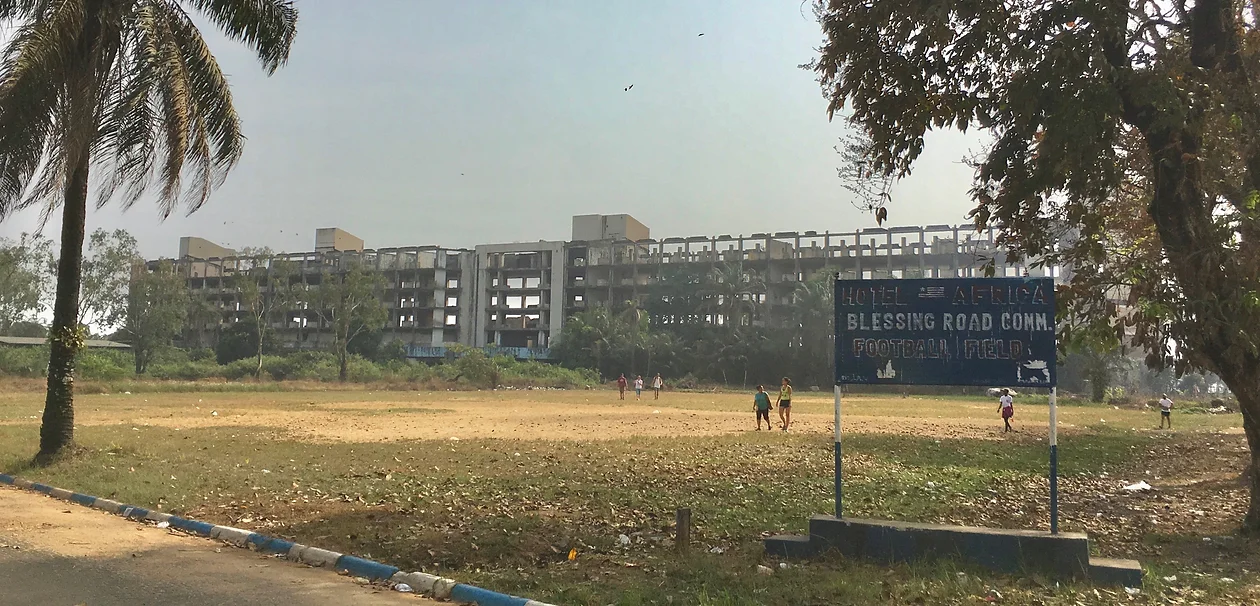Originally founded in 1847 with high hopes by the American Colonization Society, Liberia was supposed to become a haven for African Americans, both free-born and slave. Unfortunately, the lofty ideals of the founders became gradually corrupted as the repatriated Africans, mostly from areas of the continent distinct from Liberia formed an isolated elite who looked down on the local tribes as savages. Elitism led to corruption and intertribal tensions that culminated in a series of bloody civil wars.
Starting in 1980, these civil wars killed thousands, decimated the country's educated population, and saw the destruction of much of the infrastructure that had made Liberia a gem of post-colonial Africa. The Americo-African rulers were overthrown, and the country suffered under the misrule of various tribal groups, led by such figures as Master Sergeant Samuel Doe, Charles Taylor, and General Butt Naked. The latter, who led his troops into battle naked, except for shoes and gun, claiming that so clad he was bulletproof, boasted of slaughtering children and eating the hearts of his enemies. He is now the President of the End Time Train Evangelistic Ministries Inc. in Liberia.
After years of civil war, international pressure and the leadership of the domestic Women of Liberia Mass Action for Peace movement forced Charles Taylor into exile and, with the help of a UN peacekeeping force, finally brought relative stability to the country in 2003. Liberia began a slow, painful recovery, only to be dealt a major setback in 2014 with a major outbreak of the Ebola virus.

Though the peace established in the early 2000s appears to be holding, the country still struggles with extreme poverty. Many of the of the grand government buildings are still abandoned.

UN headquarters is still a steadying presence.

The King Solomon Hotel was once one of the largest and most beautiful hotels in sub-Saharan Africa. Gutted and looted in one of the civil wars, its skeleton is now a minor attraction for curious tourists. I paid a guard $5.00 for a guided tour.

The grand staircase to the lobby.

Even in its ruined state, the architecture still impresses.

The defunct swimming pool still features a fine view of the capital city.

The hallways are filled with mud and mold and creeping vegetation.

The shambolic structure looms over the city, a symbol of the hope of better times and a reminder of the fragility of that hope.

Directly below the remains of this former playground of wealthy and cosmopolitan Monrovia is the shanty town of West Point, the most impoverished slum in this impoverished city.

Optimistic graffiti adorns the wall of the pool deck.

Atop the wall, a discarded Christmas tree.

The lower floors have become a studio and gallery for Monrovia's most talented graffiti artists.




And others who emulate the simplicity of cave art.

On the outskirts of Monrovia, the gutted remnant of the once-grand houses of the Amero-African elite are now home to squatters.

Near the beach, the burned-out hulk of another palatial hotel.

Downtown Monrovia is a bit dilapidated, but still bustles with energy.

Especially the thriving street markets.

Colorful produce, flowers, inexpensive clothing, and cheap plastic toys are available in abundance.

Evangelical Christianity is very popular, with revival meetings advertised heavily.

Local and international preachers come to promise hope to the impoverished population.

A day at the beach, with the city in the background across the bay, is a way for locals to forget their troubles for a time.

Regardless of civil wars and disease, fishermen must fish.

The colorful boats are painted with humorous and hopeful slogans.

And so, among these resilient people, life goes on.
P.
No comments:
Post a Comment